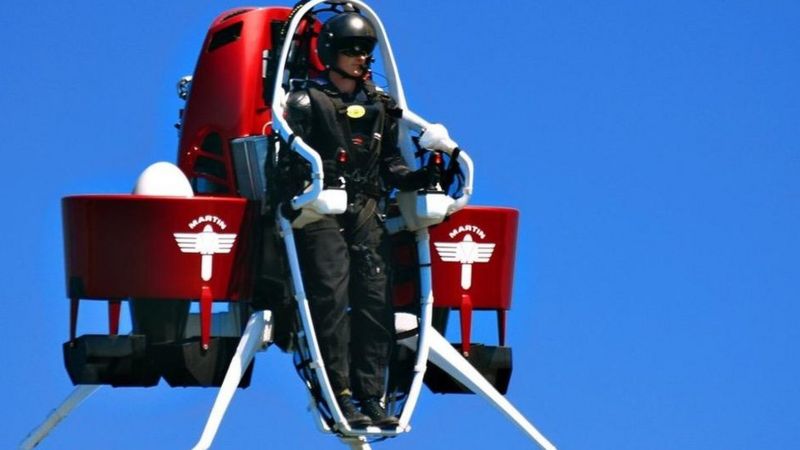Search on for personal flying machine
 Image copyright Getty Images
Image copyright Getty Images Sponsored by Boeing and run by start-up GoFly, the competition will encourage teams from around the world to come up with designs.
Entries must be capable of carrying a person 20 miles without refuelling or recharging, with a vertical or near vertical take-off and landing.
A "fly-off" will take place in 2019.
GoFly founder Gwen Lighter told the BBC: "I was one of those kids who was always making crazy contraptions and throwing themselves out of trees.
"I, like millions of people around the globe, always dreamed of flying, and I began to realise that we were seeing a moment of convergence of technologies and were at a point in history when these personal flight devices become possible."
 Image copyright Martin Jetpack
Image copyright Martin Jetpack Boeing chief technology officer Greg Hyslop said: "We're excited to see how the visionaries of the future will take on this ambitious and exciting challenge."
Prizes will be awarded in three stages:
- Stage one will include 10 $20,000 prizes based on written technical specifications
- Stage two will include four $50,000 prizes awarded to teams with the best prototypes
- Stage three will see a fly-off in the autumn of 2019 with a $1m prize for the best overall idea, $250,000 for the quietest entry, $250,000 for the smallest, and $100,000 for the most state-of-the-art design
"We see ourselves as the catalyst for kick-starting a future for personal flying devices, but at the end of two years we do not believe you will be able to go into a store and buy one," said Ms Lighter.
All entries must abide by strict safety guidelines, including having a failsafe function so there is no single point of failure, and the regulatory framework of the country where they have been developed.
 Image copyright Bret Hartman/Ted
Image copyright Bret Hartman/Ted Jetpack dreamers
Jetpack technology has advanced, but it still seems a long way from becoming mass market.New Zealand-based Martin Aircraft had promised its first commercial jetpack in 2016 - but this was delayed and, in August 2107, the company suspended from trading on the Australian stock exchange.
A spokeswoman for the company told the BBC that a loan had now been agreed with major Chinese shareholder KuangChi Science that would enable Martin Aircraft to continue and it was currently testing a jetpack for commercial release.
In April, hobbyist engineer Richard Browning showed off his Iron Man suit - six miniature jet engines and a specially designed exoskeleton - at the Ted (Technology, Entertainment, Design) conference in Vancouver.
Also in April, Silicon Valley start-up Kitty Hawk released a video of its prototype flying machine, which it plans to deliver "this year".
Roger Connor, a specialist at the US National Air and Space Museum said there were many issues that needed to be overcome.
"The challenge has been to find something that can stay in the air for longer than 15 minutes and fly further than 30 miles [48km]. There are also safety and infrastructure issues - it is no use having your personal aircraft if you don't have anywhere to land it."
He envisaged that the final design would be "part aeroplane, part drone and part helicopter".
"There is a convergence of technology - from better batteries in electric vehicles, faster processors and higher performance electric motors that are heralding a new field in aeronautics."



Ingen kommentarer:
Legg inn en kommentar
Merk: Bare medlemmer av denne bloggen kan legge inn en kommentar.